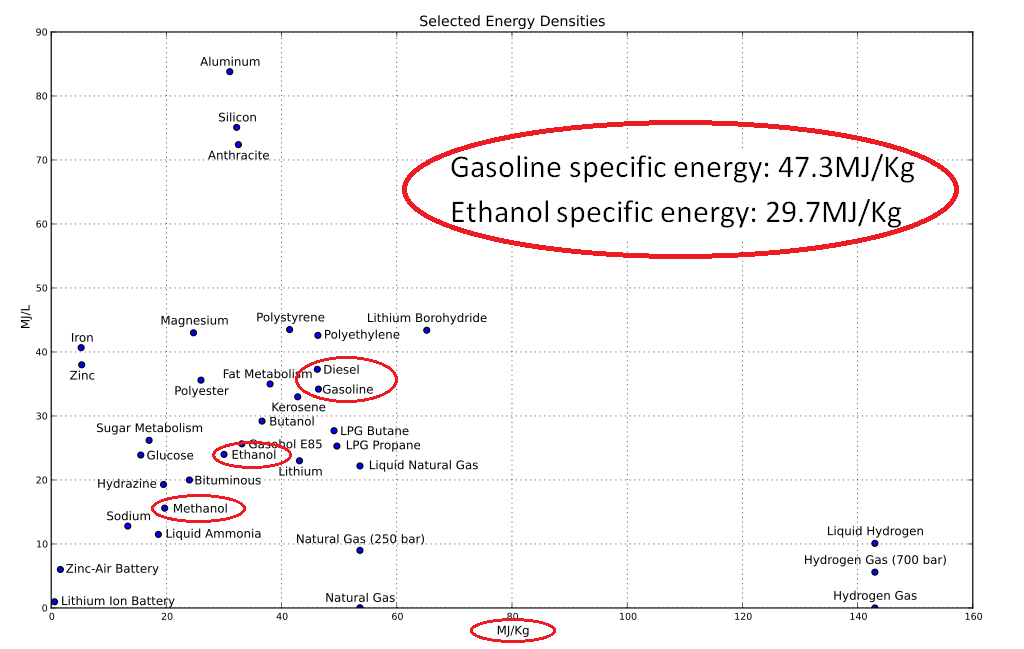You write:
"So, Methanol 4 to 1 by weight
Ethanol 7 / 8 ish to 1 by weight"
Your numbers are not correct:

It is less than 2/3 to 1 and not 7/8 (= 0.875) to 1.
You also write:
Fortunately "scripta manent".
I never wrote that a Flying Device can't fly on ethanol.
What I wrote is that the range (and the flying duration) will decrease significantly if the engine runs on ethanol.
To make it simpler:
According the above table (and my posts five months ago):
- Gasoline specific energy: 47.3MJ/Kg
Ethanol specific energy: 29.7MJ/Kg
(Diesel fuel specific energy is about equal to gasoline's).
If you have to go from an island to another island 350 - 400Km away, with gasoline fuel you can go, with ethanol fuel you cannot.
The difference of the energy densities is so big that you need an extreme increase of the BTE (Brake Thermal Efficiency) to compensate for the heavier ethanol fuel (case of engine running initially on gasoline). So forget it.
In the case of a compression ignition (Diesel) engine (like the PatOP of my last post), the BTE is way higher than the efficiency of the engine running on ethanol. So forget it completely.
Worth to mention: even a slight improvement of the BTE when the engine fuel changes from gasoline to ethanol is questionable.
Conclusion: the ethanol is not a good fuel for Flying Devices, because it is heavy for its energy content.
Thanks
Manolis Pattakos





